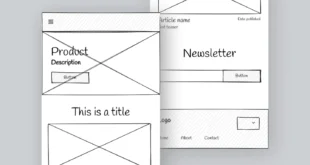Surveys are a tool often used today to gather information and gain insight into the collective opinion of the public. The purpose of their presence in various researches is quick and easy data collection. The need for this way of research comes not only from researchers or journalists but in recent decades, more and more often from various manufacturers. They thus examine the satisfaction of users and customers. Surveys don’t involve leaving personal data but are usually anonymous, so respondents won’t have a problem expressing their real opinion. The study involves a series of questions that are asked to respondents in a predetermined order. If the items are poorly formulated, thought out, or ambiguous, the answers obtained may be insignificant or lead to wrong conclusions. This research method most often occurs in the form of interviews or questionnaires.
The most important thing is to be unobtrusive and that the only goal of the author is to get an answer that will support his hypothesis. Objectivity is essential to get as accurate and precise explanations as possible. However, too long and uninteresting content can divert the attention of respondents who voluntarily and without any compensation agree to take the time to complete the survey. That’s why properly designed content is the key to getting the information you need.
For more tips on how to properly design a survey and analyze the data collected, keep reading.
Design

- First of all, think about the purpose
Before you start thinking about how you’ll formulate the questions, whether it will be open or closed or what your target group is, you first think about what you want to find out based on the research. Some of the most common purposes are mainly related to researching a market, trying to get feedback from customers or users, or monitoring the movement of some parameters.
To begin with, make a short concept that will include several questions representing the essence of the hypothesis and which should later be broken down into a series of smaller ones. Then think about the satisfactory percentage of answers.
The whole design process will be made much easier by this. You will specify essential aspects to which you will later direct your survey. Then, this specification will help you understand how communication with respondents will proceed.
- Formulation of question

Compiling survey questions is considered one of the most challenging tasks. This step is crucial and dramatically influences the respondents’ decision, whether they will want to answer or not. At first glance, it doesn’t seem complicated at all, but keep in mind that you must avoid asking a specific question at the same time, and yet it should be such that the answer gives you the desired information.
If the sentences are too long, likely, the respondents will quickly lose interest and realize that they don’t have enough time to lose. The same goes for highly professional words and unreasonable terminology that can be confusing.
Avoid asking multiple questions at once and help them with clear instructions. So simplicity and comprehensibility are your best allies. Achieving mental fatigue in people who were initially willing to respond to the survey can be disastrous for the entire project.
- Selection of the best answer styles depending on the desired data

In addition to formulating the questions, the way you structure the answers is essential. Designing them will help you gain insight into key data more easily. Depending on the data we want to get, there are several basic types of answers.
- The categorical or nominal type usually means that you need to opt for a particular option. It’s formulated by offering several answers to the question, of which the respondent should opt for one. Analysis of categorical data is considered the easiest because it comes down to calculating the percentage of responses. However, the shortcomings are reflected in the limited approach that doesn’t allow obtaining a wider range of information, but only a concrete answer.
- On the other hand, the ordinary type doesn’t imply the options offered but only a question that allows the user to describe his opinion in more detail. It represents a certain addition to the first type and is specific in the breadth of expression that it allows the respondent.
- In case of the need for interval data, the formulation of the answer is done differently. Numerical limit values are needed here within which the response will move. Interval data is useful for gathering rough information as well as categorizing other issues. Respondents most often check the box in front of the interval they agree with.
- Ratio data are accurate measurements that contain the exact required number or quantity. For example, if you’re interested in the respondents’ level of income, you’ll leave a field in the survey to enter the correct amount and get a precise numerical answer.
Click here for more ideas for the helpful question and answer types.
Analyze

Once all the data have been collected, it’s necessary to analyze them to obtain results. This process is much simpler than the previous one, but you still need to be careful so that everything is done with maximum accuracy and efficiency.
Each of the aforementioned data types is analyzed separately. In the first case, when it comes to the definite method, it’s necessary to determine the percentage of an answer in the total number of answers. This is achieved by dividing the number in each category by the total number. After categorizing, help yourself by creating a table or chart that will provide a clearer view.
In the second case, the question of the usual type often has the error of converting words into numbers and numerical statistics. Instead, it’s advisable to form a frequency table through which one can directly gain insight into the frequency of the results so that the reader can see the real situation.

Summarizing interval information is possible only in proportion and evenness. In this case, too, their tabular presentation is recommended, which will best show which interval has the most members.
The analysis of relationship data has the great advantage of supporting the average, more precisely the arithmetic means that can be found thanks to sufficiently “rich” information. Based on the information about the proportions, the arithmetic mean is calculated. The sum of all proportions is divided by their number.
Although it seems simple and fast at first glance, great efforts are made to create a good and interesting survey that will bring useful results. Taking into account all the previously mentioned aspects, you’re ready to move forward and perform quality design and analysis that require serious time and dedication.
 Imagup General Magazine 2024
Imagup General Magazine 2024



